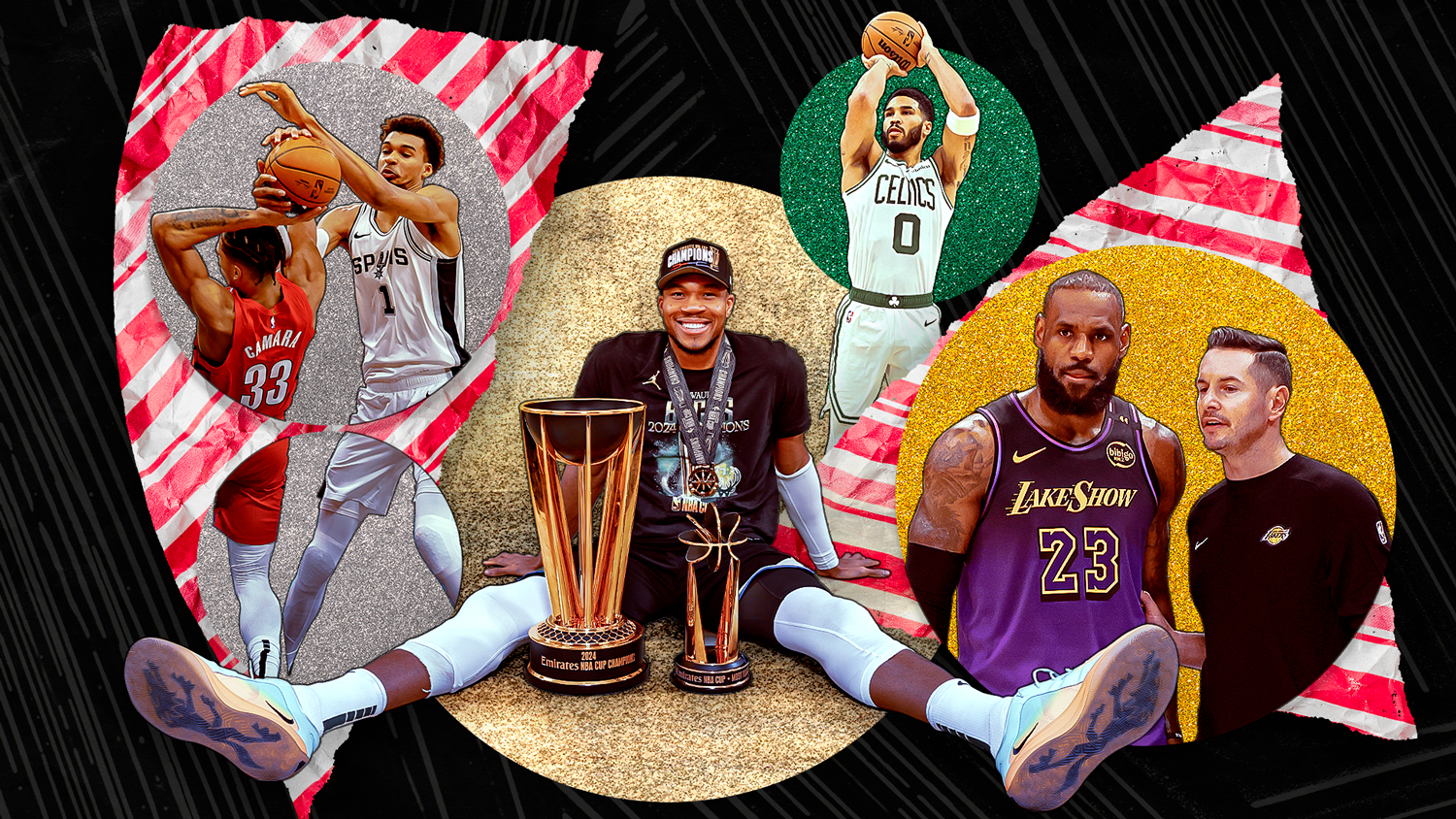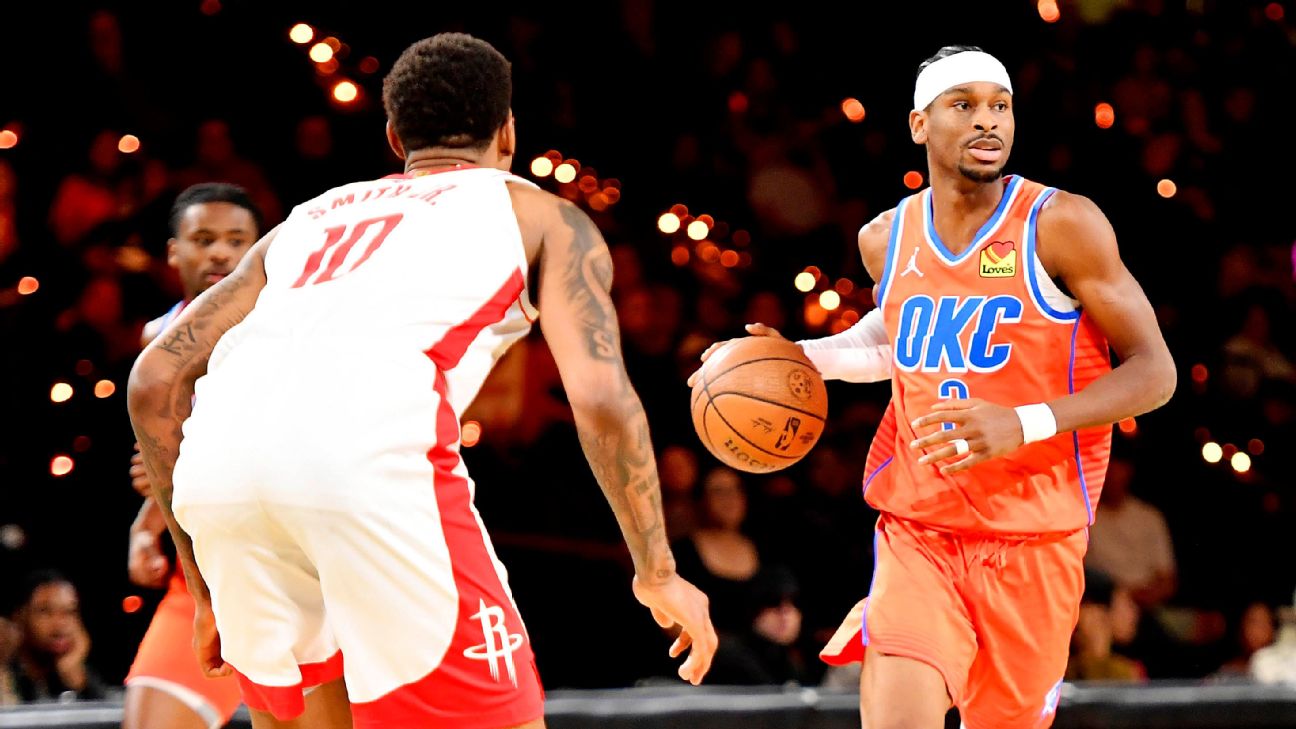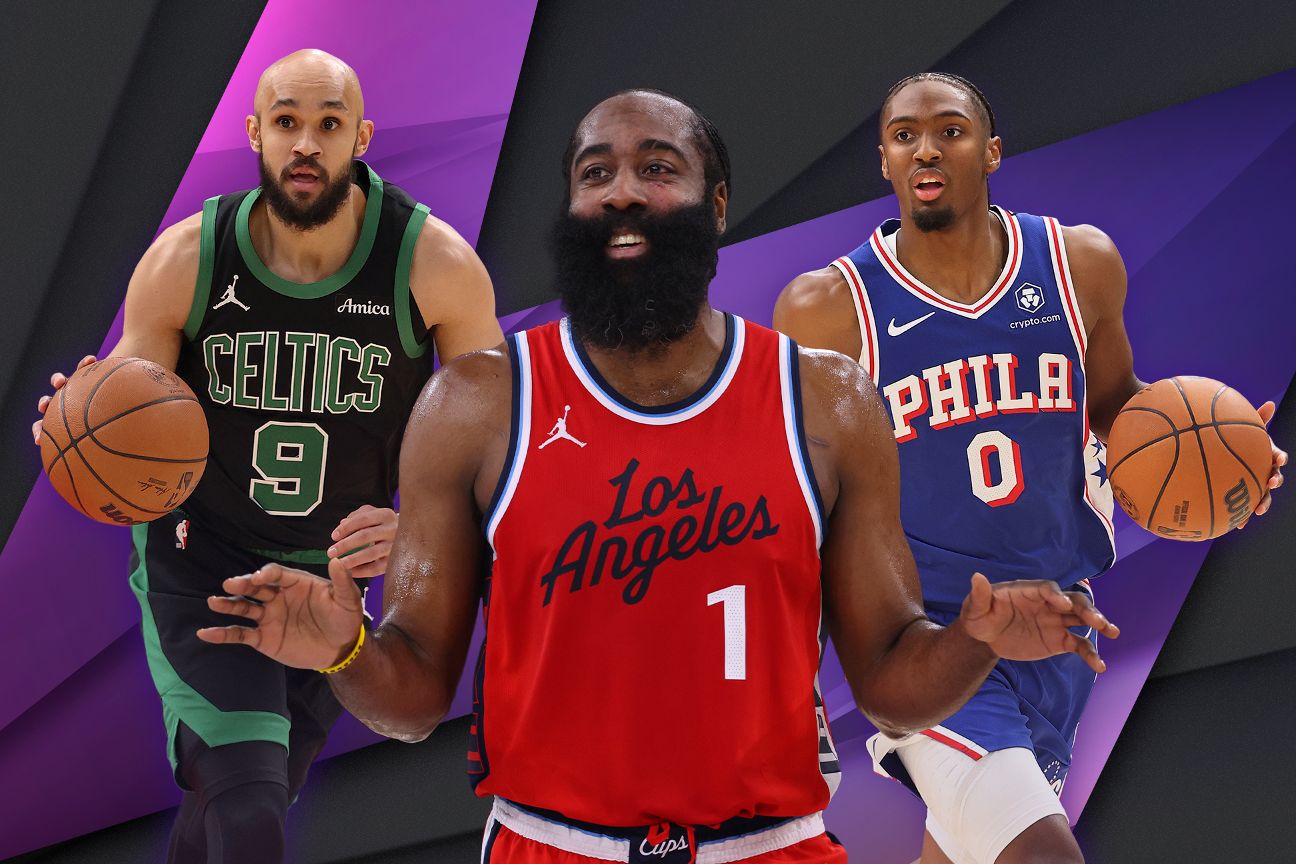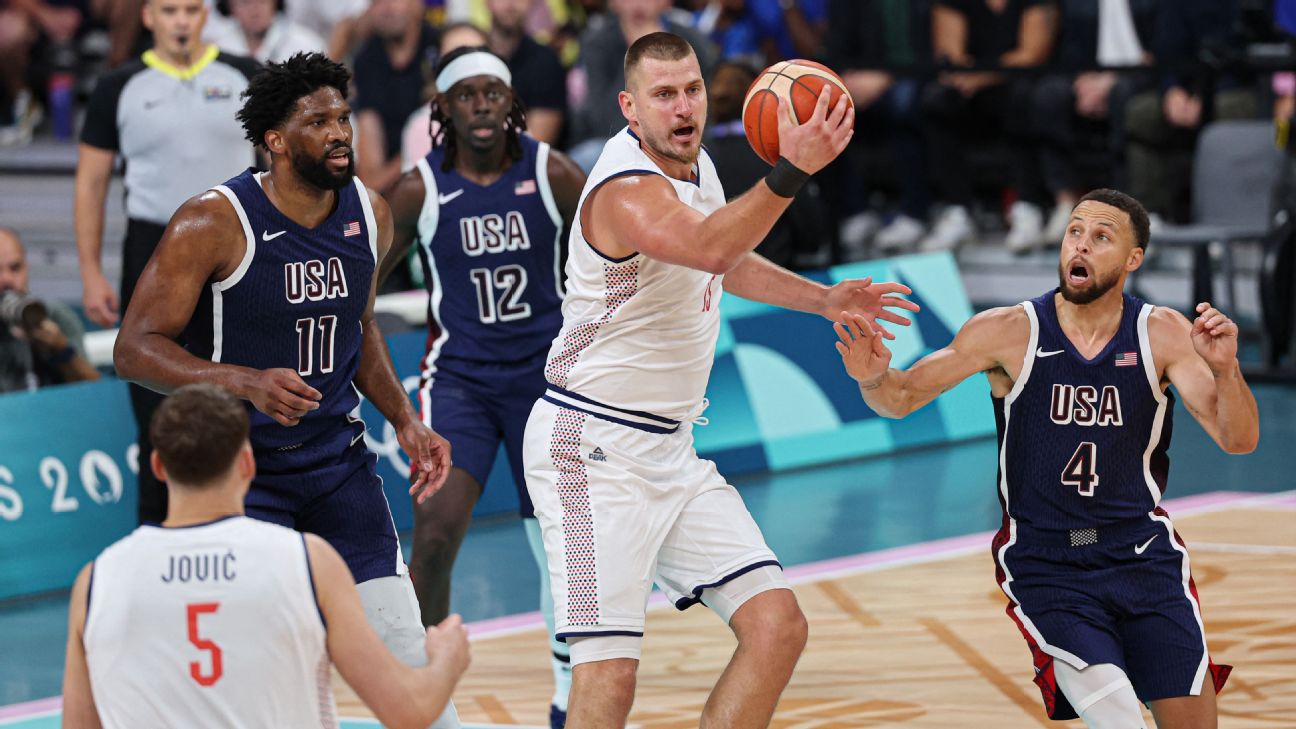With the second NBA Cup in the books, the thrilling five-game Christmas Day slate behind us and the 2025 calendar just days away, it’s a perfect time to reflect on the most notable trends that have taken hold throughout the first third of the season.
The Boston Celtics and Oklahoma City Thunder are as strong as we thought they’d be, while the Cleveland Cavaliers and Houston Rockets have been extremely pleasant surprises, with each vying to be seen not only as good regular-season stories, but true title contenders.
And with the Minnesota Timberwolves and Indiana Pacers, two of last season’s conference finalists, joining contenders such as the Los Angeles Lakers, Golden State Warriors and Phoenix Suns in conference play-in battles, the latter half of the season could make for a wild ride — especially with the trade deadline just six weeks away.
With the new year on the horizon, here are a handful of takeaways we’ve drawn from over the first two months of the season, including a massive leap for San Antonio Spurs big man Victor Wembanyama, two contenders facing opposite problems around their superstars and the future of the league’s 3-point explosion.
The Lakers have been worse with LeBron James on the court
As a 22-year veteran and the leading scorer in NBA history, most of the statistical feats James achieves upon turning 40 years old next week will be firsts.
But in the midst of the Lakers’ up-and-down season — the dramatic Christmas Day win over the Warriors being the latest chapter — LeBron has already accomplished one he’d prefer to reverse: For the first time since James’ rookie season in 2003-04, his team is worse while he’s on the court than when he’s not.
It’s well-understood that plus-minus metrics can be noisy, as they’re often influenced by the many players who share the court, but the Lakers’ performance when James plays without Anthony Davis (minus-12.1 points per 100 possessions) is perhaps the most illustrative — and problematic. It represents a whopping reversal of 17 points per 100 possessions from last season. In Monday’s loss to the Pistons, for instance, Los Angeles was a plus-17 in the James-Davis minutes, but a minus-18 in the minutes James played without his fellow star.
James is a minus-107 overall, the NBA’s second worst among those who play for a team that would be in the postseason if the season ended today. (Only Denver wing Julian Strawther, at minus-117, had a lower plus-minus heading into the Christmas games.) That makes for a stark contrast from the plus-218 James logged last season or the plus-214 he posted in 2022-23.
The bottom line is this: The 17-13 Lakers have been 8.7 points worse per 100 possessions with James on the court than they’ve been with him off. That huge net-rating gap is equivalent to the one between the 14-14 Wolves and the 7-22 Charlotte Hornets.
Nearly that entire margin comes on defense, where opposing teams are scoring 115.8 points per 100 possessions against Los Angeles when James is playing, the second-highest mark among the Lakers’ rotation players. (Only rookie Dalton Knecht’s 116.2 is higher.) But the team gives up just 106.5 points per 100 when James takes breathers, which would be a top-five rate in the league on a team scale.
James, who’d been playing through a nagging foot injury, sat out a couple of games earlier in the month and has looked better on defense since returning. Los Angeles has had the profile of a top-five defense in the four games since James came back.
Still, the Lakers face an uphill battle to become a contender in the West. A huge factor will be whether James and the Lakers defend better in his minutes on the court.
Wemby’s DPOY campaign has begun
The progression of the 20-year-old’s game is on display nightly in nearly every regard; particularly on defense, where Wembanyama has looked dominant, even compared to his impressive rookie season.
In the past four games, the Frenchman has compiled 29 blocks, and his total of 95 this season are 31 more than the next-closest player. Equally impressive: He has been whistled for only one goaltending call all season. (It helps that he has an average wrist height of 9.42 feet on his contests, the NBA’s highest, per Second Spectrum.)
But it’s not merely the shots that Wembanyama returns to sender that he’s affecting. Aside from the deterrent effect that he has on shooters, Wembanyama also forces drivers to rush shots because of their fear of rejection. He’s holding shooters at the basket to a dismal 48.9% shooting, nearly 14 percentage points worse than their averages. (Both metrics are the best in the league among players who’ve challenged 150 such shots this season.) Last season, for comparison, players shot 53.7% against Wembanyama, which was about 11 percentage points off of their average — good for 11th best in the NBA at the time.
Denver has a painfully obvious problem
After a rocky 2-3 start, with those first two wins coming in overtime against the rebuilding Brooklyn Nets and Toronto Raptors, the Nuggets won five of their next six. Still, the team hasn’t solved its biggest problem: It can’t hold its own whenever its three-time MVP takes a seat.
Nikola Jokic, averaging a career-best 30.9 points to go along with 12.5 rebounds and 9.7 assists, has been fantastic — even by his own MVP-caliber standards. Denver has blasted foes by 211 points with him on the court but have been outscored by 118 when he’s on the bench. Look no further than the Dec. 3 game against the Golden State Warriors, in which Denver won the Jokic minutes by 23, but lost his bench minutes by 19.
It has been a familiar story all season for the Nuggets, who have lost second quarters, when their second string generally gets its most playing time, by an average of 9.1 points per 100 possessions. Only the Wizards (4-23), Hornets (7-22) and the New Orleans Pelicans (5-25) have managed to fare worse. Even with free agent newcomer Russell Westbrook playing well, the Nuggets’ bench has been among the weaker units in the league, even when the team’s second- or third-best player is sharing the court with the reserves.
Case in point: When Jamal Murray is playing with the other four starters on the bench, Denver is being outscored by 5.1 points per 100 possessions in 75 minutes. Even worse, when Michael Porter Jr. is on the court without any other starters, the Nuggets are being overwhelmed by more than 60 points per 100 possessions in 65 minutes. Neither bodes well for a club that’s still assessing what it has in terms of role players but will need to survive at least a few minutes per game come postseason without Jokic on the court.
The NBA is looking into the continued 3-point explosion
Last week, NBA commissioner Adam Silver said he and his staffers are paying attention to the increased role of the 3-point shot in the sport. But should they? Are the long-range jumpers getting more attention than they deserve? The answer is mixed.
Yes, teams are taking 37.6 3s per game — up from 35.1 last season — the highest average in league history. But at the same time, jumpers as a whole are actually down from where they were two seasons ago (53.4% of all shot attempts as opposed to 53.8% in 2022-23).
Perhaps the most interesting: The leaguewide quantified shot quality (qSQ) on 3s — meaning the likelihood of a shot going in while taking into account a shooter’s distance and the closest defender’s proximity — is the highest since Second Spectrum tracking data was first logged in 2013-14. With the looks becoming better and more efficient, teams have little reason to take fewer of them.
If anything, it suggests that the league needs to do more — perhaps allowing more physicality on defense — to better equip defenses that are trying to cover an increasingly spaced-out floor.
ESPN Research’s Matt Williams contributed to this story.



